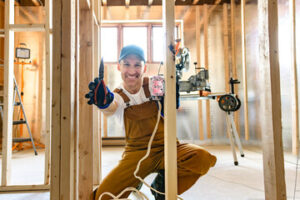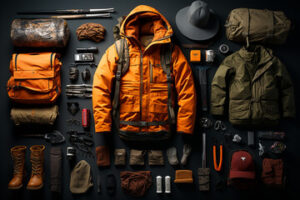When you need work done on your basement, consider hiring a full Basement Repair Naperville IL company rather than a general contractor. These companies prioritize customer relationships and offer long-term maintenance.
This homeowner was having trouble with water seepage through her basement walls. After installing 126 feet of interior drainage, a waterproof paneling system, and a dehumidifier, she now has a clean, dry basement.

Foundation Cracks
Foundation cracks are usually a sign of structural damage, but not all cracks are the same. Deciphering which cracks are harmful can save you a lot of money and time, ensure emergent cracks are repaired ASAP, and help you track the overall stability of your basement walls over the long haul.
Hairline cracks are common in poured concrete foundation walls and usually don’t cause a major problem as long as they don’t grow wider or allow water to leak into the basement. They often appear days or weeks after a foundation is installed and are caused by the natural shrinkage of the concrete.
Wider, horizontal foundation cracks are a serious concern and can be a sign of shifting soil and sinking. They can be caused by several factors, including poor construction of the foundation’s footings, moisture problems, or subpar grading.
If you notice a horizontal or diagonal crack in your foundation, it’s essential to get it fixed immediately. The best way to fix these cracks is to use a concrete epoxy injection kit. Start by cleaning the area around the crack, then widen the gap slightly with a chisel or angle grinder to give the epoxy more surface area for better adherence. Then, inject the polyurethane product into the crack until it’s filled, and follow the manufacturer’s instructions for drying. After the crack is filled, paint over it to seal out any remaining moisture and protect the foundation walls from further damage.
Waterproofing
A little water in a basement is normal and acceptable, but too much can cause structural damage and create an ideal breeding ground for mold. Addressing the problem early is key to avoiding more serious and costly repairs down the road. You may be able to waterproof the basement on your own with DIY products, but consider calling in a professional for more complicated solutions like sealing wide or uneven foundation cracks or installing an interior drainage system.
Interior waterproofing keeps moisture out of the basement by applying a sealant to walls or floors. This can be done by professionals or as a do-it-yourself project, but it must be applied after the basement is dry to avoid trapping moisture that could lead to mildew or mold growth. A more permanent solution is epoxy injections that repair cracks and gaps in the concrete walls and floor of the basement.
Exterior basement waterproofing is more difficult and time-consuming, but it can be the most effective. It can be accomplished by removing flowerbeds, lawns, and other landscaping that could direct water toward the house, making sure gutters are working properly, and grading the yard so it slopes away from the home. Adding a sump pump to the basement and sealing concrete surfaces can also help reduce moisture in the basement. The first step is to test for moisture transmission using a moisture meter or vapor transfer kit.
Sump Pump Installation
Sump pump installation is a wise investment for homeowners who live in areas prone to flooding. Even in homes that have never flooded before, frequent rainfall and extreme weather can lead to water damage and other problems. Having a way to move the water away from your home will prevent your basement from getting flooded and help keep moisture out of the walls, preventing staining and peeling.
Your professional plumber will dig a hole in your basement floor to install the sump pit or pump basin. They will then line the pit’s walls with a waterproof membrane to ensure that the drained water doesn’t seep into the surrounding soil. They will also install an exterior discharge line to eject the drained water from your property. This will protect against groundwater seepage and prevent the drained water from putting pressure on your foundation.
Next, they will plug the sump pump into a GFCI-protected receptacle and test it. The float switch in the pump should activate when it reaches a certain level and then turn off when the water is removed from the pit.
A check valve should be installed between the pump and the discharge pipe to prevent the drained water from draining back into the sump pump. Once everything is in place and ready to go, they will cover the hole and the area around the pump with concrete.
Carbon Fiber Reinforcement
Carbon fiber reinforcement is a relatively new solution in the basement repair industry, but it’s a game changer. It’s known for its exceptional tensile strength, which can be used to stabilize and straighten bowing walls and foundations that have lost their structural integrity. It’s also durable and won’t corrode, which makes it the ideal material for basement structural repair.
Carbon-fiber-reinforced polymers (CFRP), or carbon fiber composites, are a combination of two different materials: carbon fibers for strength and a matrix of thermoset plastic, such as epoxy resin, to hold them together. CFRP is used in a wide variety of applications, including concrete reinforcement, where it can be used to increase the load-bearing capacity of existing structures and prevent further deterioration.
It’s also used for repairing and strengthening concrete structures and components, including bridges, tunnels, buildings, and other infrastructure. This type of structural repair is particularly effective because it’s done on-site and requires minimal excavation or disturbance to the structure’s surface.
Our carbon fiber basement repair services are done with extreme care and precision. The experts at our company first conduct a thorough assessment of the affected area to determine the extent of the damage and how it can best be addressed. Then, the appropriate carbon fiber strips are applied to the wall, creating a strong bond that strengthens and stabilizes the wall. The process is fast, convenient, and efficient, allowing us to complete the repairs quickly so your basement can be back in use as soon as possible.
Wall Anchors Or Braces
Wall anchors and braces are used to support bowing basement walls, a problem that occurs when expansive soil puts pressure on the foundation. This pressure causes the walls to curve inward like an archer’s bow and can damage the home’s structural integrity.
The best way to prevent this damage is by securing your basement walls with a dependable wall anchor system. Our expert technicians install these systems by drilling holes into the basement wall and connecting steel rods to anchor brackets on the inside of the wall. These anchors then connect to pins that are drilled deep into stable soil. These anchors transfer foundation pressure away from the basement, halting the walls’ inward movement and straightening them over time.
There are two types of basement wall anchors: helical tieback anchors. Helical tieback anchors are perfect for a basement with limited interior access because they can be installed without excavating the yard. These anchors look like a corkscrew and work by applying opposite pressure to cancel out the hydrostatic forces that caused your basement walls to bow in the first place. The PowerBrace system is custom-fit to the height of your basement walls and secured with a bracket that attaches to floor joists and footings. These galvanized metal beams can be tightened over time to straighten and stabilize your bowing basement walls, preventing further damage and avoiding a costly full foundation replacement. Both these systems are backed by product and service warranties and a transferable lifetime guarantee.
Foundation Replacement
Foundation replacement is typically required when a home’s structural integrity is seriously compromised. This may be indicated by a large number of cracks in the basement walls, doors that are difficult to open or close, gaps developing in trim work, and/or serious sinking or tilting of the building.
When this type of problem is detected, a professional will often develop a plan to reinforce the foundation and reposition the building back into its original position. During this process, the foundation will be jacked up with hydraulic piers that are installed at strategic points underneath the building’s structure. These devices, which vary in size and shape (i.e. resistance push piers, helical piers, or slab piers), are designed to transfer the building’s weight from the unstable soil into the deeper, load-bearing soil or bedrock.
These types of permanent repairs can be the best way to stabilize a house’s foundation but are also the most expensive. This is because they involve digging underneath the home to install the support system, which requires extensive excavation work, and then pumping concrete or helical steel into the ground to reach the load-bearing soils or bedrock. For this reason, it is best to leave the job of repairing and replacing your foundation to a professional who can ensure that the new repair method adequately addresses the root cause of your problem. These professionals are typically able to provide long-term, cost-effective solutions by using engineered steel piering systems that can go much deeper than traditional methods.


